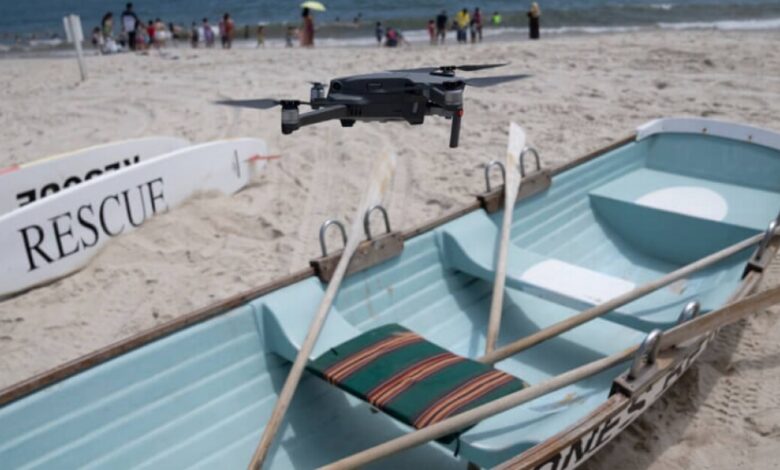
"Get out of the water!"
Hearing those words at the beach usually means there’s one thing nearby you don’t want to meet.
Just this past week, five people were possibly bitten by sharks across beaches in New York.
"All we know for a fact is that we've had what we refer to as a spate of attacks in a very short period of time," said Ralph Collier, President of the Shark Research Committee.
Luckily, everything has been minor," said Scott Curatolo-Wagemann, Investigator at Global Shark Attack File.
Collier and Curatolo-Wagemann research shark encounters, and now they’re working to pinpoint the species of shark responsible for biting surfers and swimmers this holiday week.
"The two that were confirmed for the 4th of July look like they were bitten on the right knee and on the hand," said Curatolo-Wagemann.
Both Collier and Curatolo-Wagemann say these bites were small puncture wounds and non-life-threatening—most likely, they say, the sharks mistook humans for fish — which is becoming more common with sharks coming closer to shore to hunt.
"One of the reasons they think that you're seeing more interactions is because the water here is cleaner. So, you're getting more. Not just sharks, but other species," said Curatolo-Wagemann. "It’s very surreal. Never in my life would I have ever thought that I would’ve had this close encounter."
But the bites in New York aren’t the only encounters; just last weekend in Florida, paddleboarder Malea Tribble felt a shark tap her paddleboard. It circled her before swimming away.
"If that shark wanted to knock me in the water, it could have, and it didn’t. So, I kind of look at that like it wasn’t there to harm me; it was really trying to figure out what I was. I’m in their territory," said Tribble.
SEE MORE: Shark attacks in New York, sightings in Florida put swimmers on alert
Because of moments like that, cities and counties are taking extra steps to keep people safe using technology.
George Gorman works with the New York State Parks, and his team is deploying drones over beaches to monitor shark activity.
"This is our new normal," says Gorman. "Before swimmers are in the water, we scan the waters frequently during the day. We're scanning the waters so that we can keep every swimmer as safe as we possibly can."
Now, they’re making a program to teach other cities how to do the same.
"I think we will be doing it for many years to keep the swimming public safe," says Gorman.
But even if you’re at a beach where drones are on patrol, here’s what you can do to stay shark-safe:
- First, swim in groups.
"The survival instinct in them is very strong, and they are not going to challenge a group of objects that are unfamiliar to them," said Collier.
- Next, avoid wearing jewelry or bright-colored bathing suits—those can mimic fish scales.
- Don’t swim near people fishing.
- If you see a group of fish near you, move away.
- Avoid swimming at dusk and dawn when shadows are most present—it’s easier for sharks to hide and easier for them to mistake you for prey.
In the end, the experts say don’t let these encounters stop your summer fun.
"You're more likely to get injured walking into the water on the beach or driving to the beach than you are to be bitten in the water by a fish. I would go to the beach. Have a good time. I do," said Collier.
Trending stories at Scrippsnews.com








